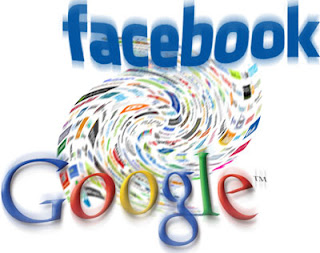For many people, the term Web 2.0 is complicated. They fail to understand what this is and how it works. Many so-called experts have tried to give their long drawn out technical explanation of this type of web site. The problem, though, is that they use so much jargons and hard-to-understand technical mumbo jumbo that an average person won't be able to comprehend and he/she will probably need a Rosetta stone to decipher what these experts are saying.
One of the definitions that I came across when I first started looking into Web 2.0 was a term to characterize design patterns in which they called a constellation of a new generation of web applications. They went on to speak of infrastructures, and new and improved collaborations. The further I read on, more confused I became. The only thing that I was able to gather from the writer was "Web 2.0 was a phrase coined by O'Reilly Media in 2004". Understanding who coined the phrase was not going to help me understand how this new generation of web applications was going to benefit me.
The only way I figured I was going to learn what this was all about was to jump in headfirst and start using these sites to my advantage. With no real understanding of these sites' true purpose and function, I was leery for some time. After utilizing different variations of Web 2.0 sites, I have now figured out what this is all about, once you remove the confusing tech talk. Is it not about time for the average person to understand what this concept is? Well, hold on because I am getting ready to explain this concept to you without using hard-to-understand technical terms.
Web 2.0 websites are user-generated content sites. Visitors to the sites sign up and then start contributing their own content to the site. MySpace is a user-generated Web 2.0 social networking site. Users create their own profiles, add pictures, and upload videos and even music to the site. Social bookmarking sites such as Digg allow users to submit links to stories, videos and website that they like along with their own review of the pictures, videos and websites in general. Thus, the majority or whole content of these sites is that of contributions from users just like you.
The way this concept differs from what we know about traditional sites or Web 1.0 sites is that the traditional sites are sites that are more static. In this, the webmaster generates all the content for the site and shares this content with you. You have no say in the content that is on this site, nor do you usually have a chance to leave your own opinion of what you have seen on the site. Now some traditional sites do have areas for comments but this should not be confused with the broad user-generated content sharing of a Web 2.0 website.
Take the blog site Tblog.com for example; this site is a Web 2.0 blog that is comprised of thousands of users creating individual blogs on a variety of subjects. All the information you find on this site is user-contributed. The same concept applies with YouTube, which has tons of videos that you can watch. All of these videos are all user-contributed to add a lot of diverse content to the website.
Now you can see in plain English a simpler explanation of what a Web 2.0 site is. Once you take all the technical talk and industry jargon out of the equation, everything starts to make sense. User-generated content sites means marketing potential for you. One of the rewards of Web 2.0 marketing is that it is virtually free to use.
You will know how to successfully utilize these sites from this blog. After all, I have already been down that road and went through my trials and errors on what marketing with Web 2.0 sites can and cannot do for you and your business. So read on and let me take some of the guesswork out of this for you.











0 megjegyzés:
Post a Comment